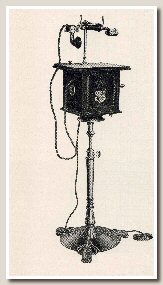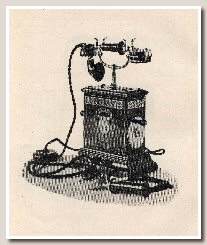History of Telegrafverket
When the first telephones saw the light of dawn, Telegrafverket already had extensive operations all around Sweden, although the authority did not take much interest in the new invention.
There were not many at the time who realised the potential of telephony, and on the part of Telegrafverket there were no objections against people setting up telephone networks privately. The authority initally thought that the advantage of the telephone, in a larger perspective, was that it could help increase speed of telegram transmissions.
As the interest for telephone associations grew all around the nation, Telegrafverket also started to realise the significance of the technology. A particular concern was that the telephone networks would compete with the telegraphy traffic and that it therefore would have an adverse effect on the authority's interests.
In 1881, Telegrafverket started offering to the general public the opportunity to connect through private lines to the nearest telegraph station. The following year, the first publicly available state networks in Härnösand and Uddevalla were established.


In the end, the situation for the private telephone associations became unsustainable and in connection with the acquisition of Stockholm's Allmänna Telefon by the state in 1918, all telephone operations in Sweden were, in practice, to be considered as a state monopoly. The private subscribers no longer had to have double telephone sets for different networks, which in some cases hade become necessary. Until the end of the 1890's, the government telephone networks mainly used LM Ericsson equipment. Then Telegrafverket started to build its own workshops in order to gain independence from private contractors.
At this time there already existed an extensive domestic telecom industry, both private and public through Telegrafverket, and the technological development began to distance itself by leaps and bounds from the time of the first pioneers.